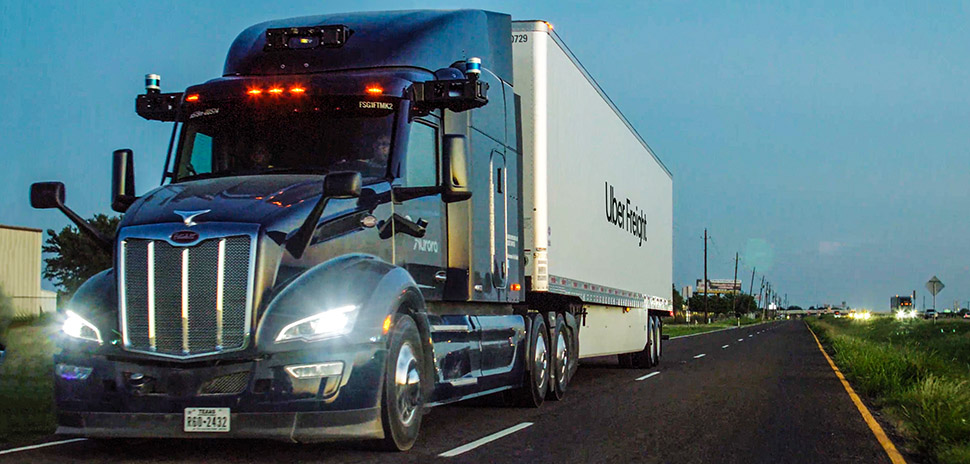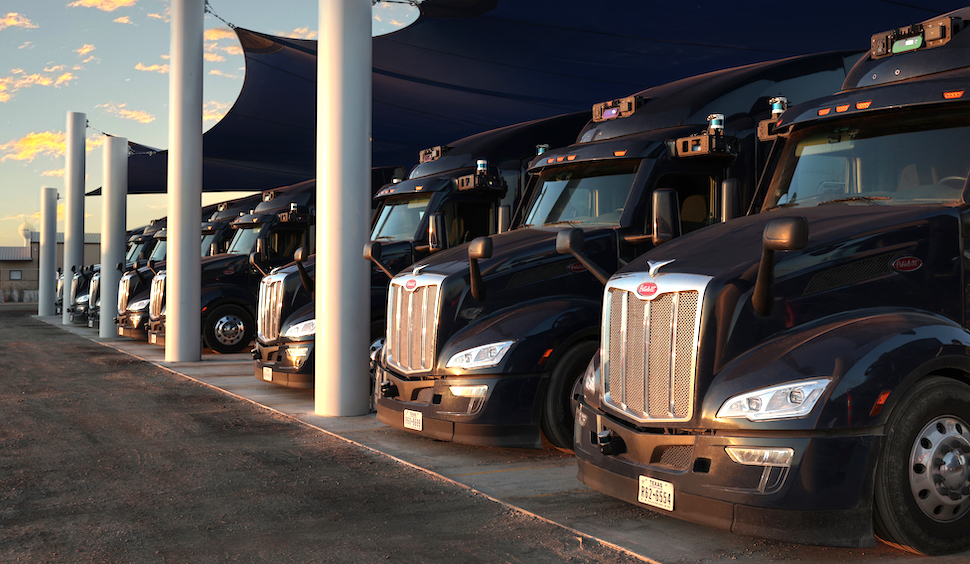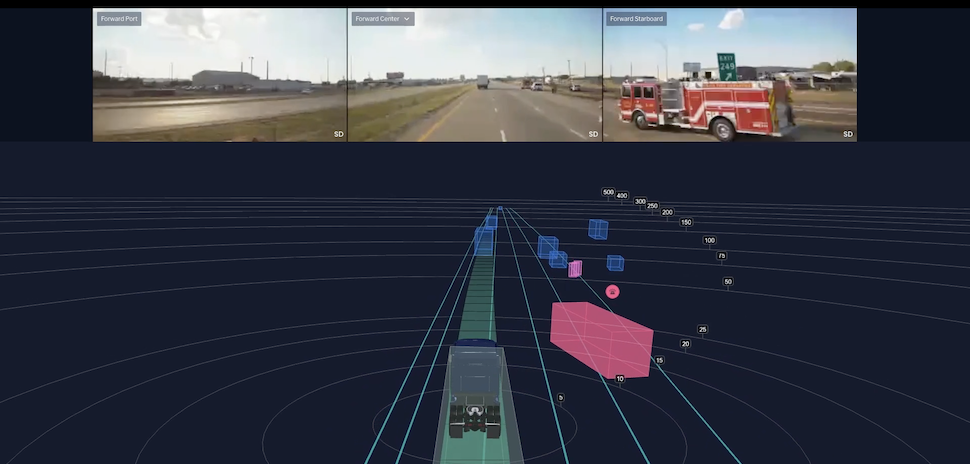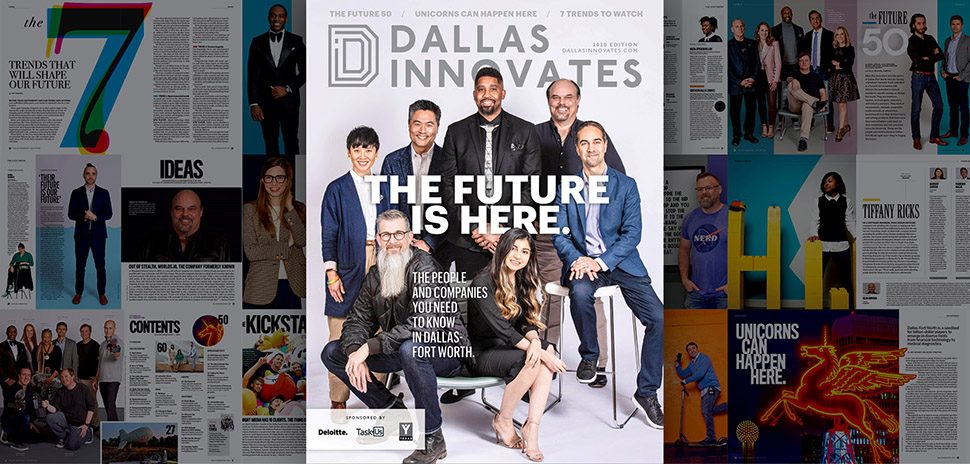Aurora Innovation has been performing autonomous trucking runs from Dallas-Fort Worth to Houston and El Paso for customers including FedEx, Uber Freight, Werner, and Schneider. So far, it’s done this with human operators supervising things in the cab. But now it’s reached a milestone that could help it meet a goal of rolling totally human-free trucks between Dallas and Houston by late 2024.
Today Aurora—which appointed a Dallas-based president in January—announced that its Aurora Driver is “feature complete,” in what the company calls “a critical milestone” in its path to launching Aurora Horizon, its autonomous trucking subscription service. The autonomous vehicle company is based in Mountain View, California and Pittsburgh, Pennsylvania.
The company says the “feature complete” status of Aurora Driver Beta 6.0 was achieved in the first quarter of this year, following the introduction of “the final driving capabilities needed to commercially haul freight without vehicle operators between Dallas and Houston by the end of 2024.”
Those capabilities were fueled by landmarks like Aurora’s proprietary FirstLight lidar, the creation of the Aurora Virtual Testing Suite, and the Aurora Atlas, its lightweight HD mapping system, the company said.
“From day one, we made foundational technology investments and strategic decisions that have helped us reach this pivotal moment,” Chris Urmson, Aurora co-founder and CEO, said in a statement. “We’re now positioned to close our Safety Case for launch, the final step to achieving Aurora Driver Ready later this year. As we mature operations in advance of the launch of Aurora Horizon, our customers will continue to experience the value autonomy can bring to their businesses.”
Responding to collisions and identifying extreme weather events

Aurora and Uber Freight aim to unlock autonomous truck capacity for carriers with Aurora Horizon, which will be deployed in the coming years and serve carriers across the Uber Freight platform. [Photo: Aurora]
The company says that over the last 18 months, six updates have “incrementally increasing the Aurora Driver’s autonomous performance, safety, and reliability in pilot hauls for companies like FedEx, Werner, Schneider, and Uber Freight.”
The latest capabilities to be refined and unlocked include:
• “Identifying and responding to collisions with other vehicles or property. For example, when the Aurora Driver detects that it has been in a collision, like a sideswipe, it will come to a safe stop and notify a Command Center Specialist.:
• “Detecting and responding to ‘out of design domain’ scenarios. In situations such as extreme and unexpected weather events, the Aurora Driver will notify a Command Center Specialist, who can instruct it and the rest of the fleet on how to proceed.”
Next steps: ‘validation and refinement’
Aurora is now moving on to a series of validation and refinement steps as it builds toward a human-free product rollout in 2024.
By the end of 2023, the company expects to “complete the necessary validation to close the Aurora Driver Safety Case for driverless operations” on its Dallas-to-Houston launch lane. As part of that process, Aurora expects to increase its pilot load volume to 100 loads per week by the end of this year.
Aurora appointed a Dallas-based president in January
In January, Aurora appointed Dallas-based Ossa Fisher as its president. Fisher joined the company from Istation, a Dallas-based e-learning company whose platform is used by millions of students worldwide.
Aurora said Fisher will continue to be based out of Dallas near Aurora’s current center for vehicle operations, which is in the suburb of Palmer just south of the city.
![]()
Get on the list.
Dallas Innovates, every day.
Sign up to keep your eye on what’s new and next in Dallas-Fort Worth, every day.
































